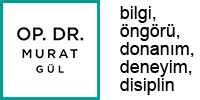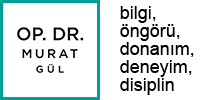Amblyopia
Amblyopia, also known as lazy eye, is a sensory vision impairment that occurs in the central visual pathways without any structural eye disease. The primary causes of amblyopia are classified into three main types:
- Anisometropic Amblyopia
- Strabismic Amblyopia
- Deprivation Amblyopia
Anisometropic Amblyopia
- Occurs when one eye has a significantly higher refractive error than the other, leading to insufficient visual stimulation.
- A difference of two lines or more in visual acuity between the two eyes is considered amblyopia.
- Contrast sensitivity curve is primarily affected at high spatial frequencies.
- Amblyopia is less common in myopia below -3.0 D, while in hyperopia, a difference of +1.0 to +2.0 D between eyes may lead to amblyopia.
Strabismic Amblyopia
- Develops in children with strabismus, where one eye is used for fixation while the other deviates.
- Alternating fixation prevents strabismic amblyopia.
- Esotropia (inward deviation) is more likely to cause amblyopia than exotropia (outward deviation).
- Can develop from birth to seven years old.
- Successfully treated with occlusion therapy, but may recur until around 9-10 years of age.
- Studies show that even in middle-aged and adult patients, vision in the amblyopic eye can improve if the dominant eye is lost.
Deprivation Amblyopia
- Caused by obstructions in the visual axis, such as congenital corneal opacities, cataracts, eyelid tumors, or intraocular pathologies that significantly reduce visual input.
- Contrast sensitivity and visual acuity are equally affected across all spatial frequencies.
Diagnosis & Auxiliary Tests
- Amblyopia should be suspected in children with strabismus or a strong fixation preference for one eye.
- It should also be considered in cases where:
- Hyperopic difference >2.0 D
- Myopic difference >4.0 D
- Astigmatism difference >1.25 D
- Afferent pupillary defects may be present in severe amblyopia.
- Color vision remains normal in amblyopic patients who have sufficient vision to detect colors.
- Fixation tests:
- If a child resists covering one eye, amblyopia may be present in the uncovered eye.
- If both eyes alternate fixation equally, amblyopia is unlikely.
- In severe amblyopia, the affected eye will drift away after a short period of fixation.
- Crowding phenomenon:
- Amblyopic children may identify single letters better than grouped letters on a vision chart.
- Eccentric fixation:
- Severe amblyopia can cause the patient to fixate with a non-foveal retinal area instead of the central fovea.
Critical Periods
- Greatest risk for amblyopia occurs when one eye is occluded for 4-6 weeks in early life.
- Studies show that only three days of monocular occlusion during this period can lead to a dominance shift in cortical neurons.
- Sensitivity gradually decreases but remains until 3-9 months of age.
Treatment
- Correction of refractive errors is the first and most crucial step.
- Any strabismus should be corrected with glasses or surgery.
- Main treatment options include:
- Occlusion Therapy
- Penalization Therapy
- Pleoptic Therapy
- CAM Treatment
Occlusion Therapy
- The gold standard treatment, forcing the use of the amblyopic eye by covering the dominant eye.
- Different occlusion methods:
- Full-time occlusion of the healthy eye.
- Part-time occlusion (5-6 hours per day) until vision equalization is achieved, followed by maintenance occlusion (1-2 hours daily) until 9 years old.
- Alternating occlusion (covering the good eye for 2-7 days and the amblyopic eye for 1 day).
- Important considerations:
- Occlusion should not cause amblyopia in the healthy eye.
- Children may resist occlusion, requiring parental engagement, interactive activities, and modern digital tools to maintain compliance.
- In strabismic children, the uncovered eye may start to deviate, which is considered a sign of successful treatment.
- If no improvement is observed after six months of consistent occlusion, treatment should be discontinued.
- Treatment goal: Equal or near-equal vision in both eyes.
Penalization Therapy
- Uses atropine drops to blur the vision in the dominant eye, forcing the brain to use the amblyopic eye.
- Mainly used for mild to moderate amblyopia.
Pleoptic Therapy
- Uses a modified direct ophthalmoscope (pleoptophor) to stimulate the peripheral retina with bright light, followed by foveal stimulation to reinforce central vision.
CAM Treatment
- Particularly effective in anisometropic amblyopia but also useful for strabismic amblyopia.
- Uses rotating high-contrast black and white grating patterns to stimulate vision.
- Treatment typically involves 7-minute sessions per eye with increasing complexity.
- Discontinuation may lead to regression, so occlusion therapy should be continued in parallel for long-term stability.

